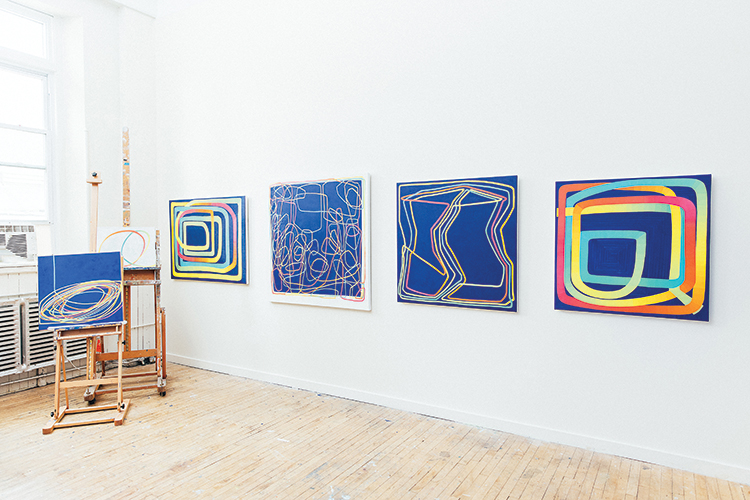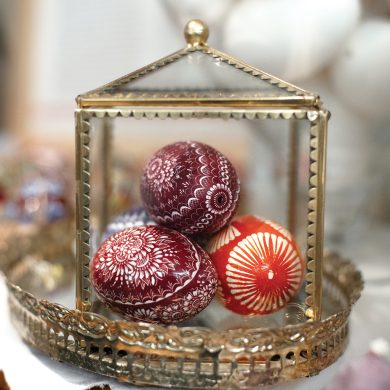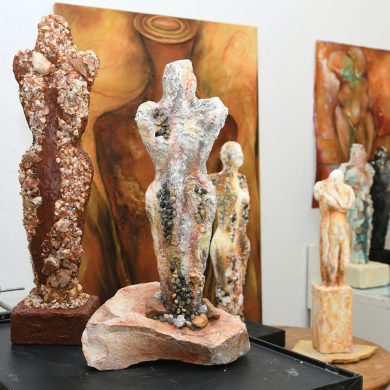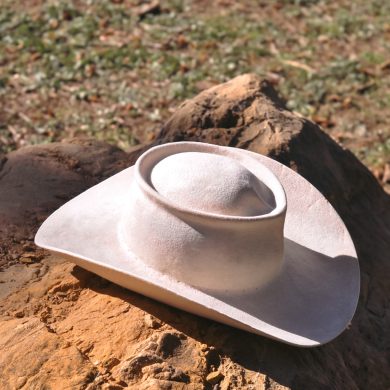
I create linear abstract oil paintings that are often comprised of a single, luminous line that meanders, changes color, and seamlessly connects back to itself. As I prepare to paint, I mix up to 100 gradients of color derived from my memories of scuba diving among tropical fish on the world’s coral reefs. By repeatedly laying down the colorful gradients one brushstroke at a time, I create radiant, light-filled lines that change color hundreds of times, reflecting a quality reminiscent of the bioluminescence that emanates from sea-life. My work is interactive, inviting the viewer to track a meandering, color-changing path.
It looks like you’re out of free articles.
Become a Women Create member to read this full article.
Already a member? Sign in

Monthly Membership
- Unlimited access to the Women Create website
- Monthly Maker Moments livestreams, members-only newsletters and more

Annual Memberships
- Unlimited access to the Women Create website
- Print and digital subscriptions of WHAT Women Create magazine, WHERE Women Create magazine, or both
- Monthly Maker Moments livestreams, members-only newsletters and more







